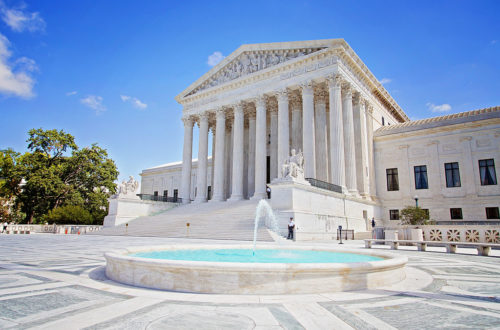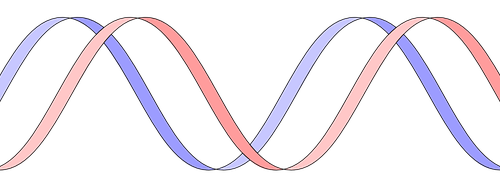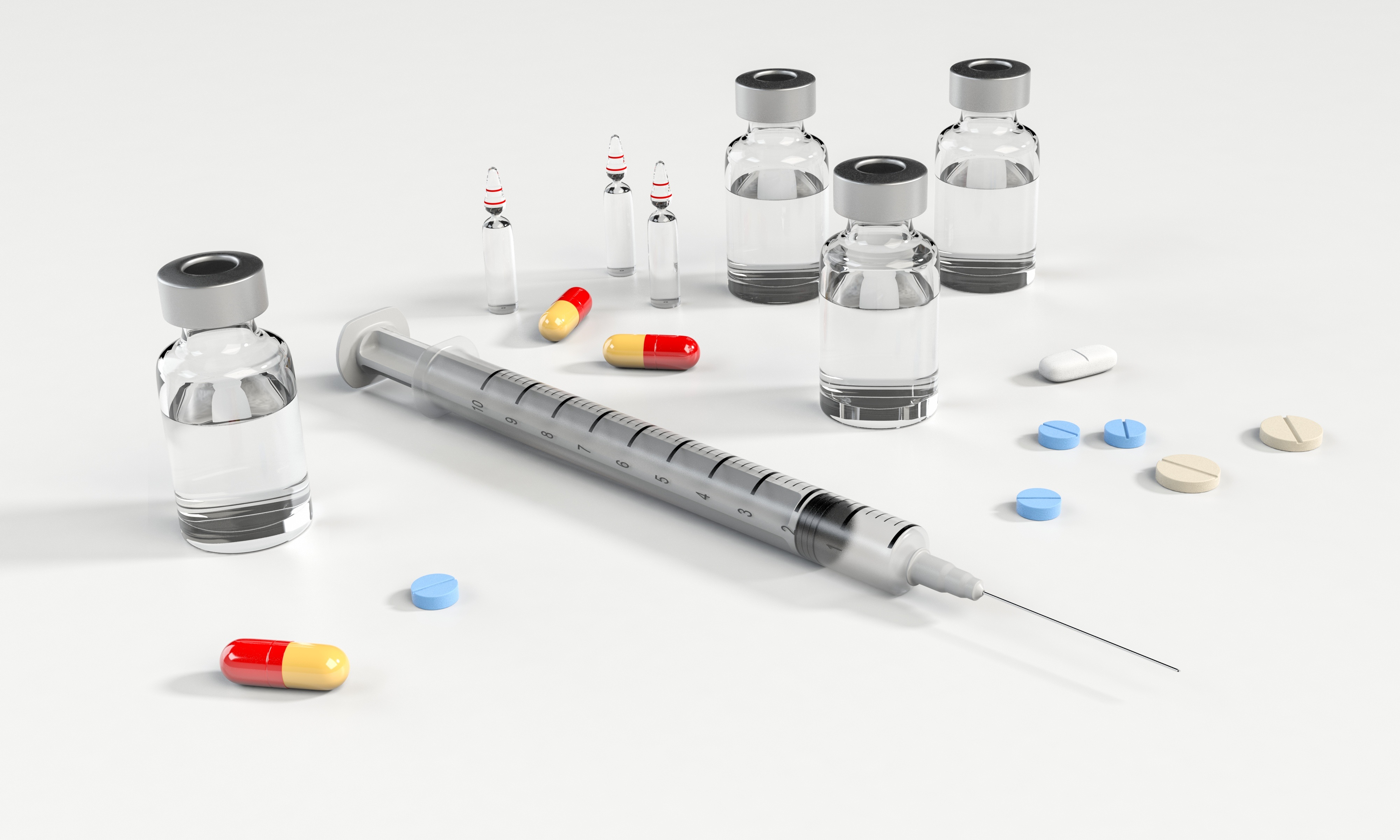Post-filing data can sometimes be the crucial difference between a patent allowance and a final rejection. The reasons are endless why important data may not have been included in the original patent application as filed. Time and budget may have been insufficient to generate data over the full scope of the claims at the time of filing. The priority of a company’s business may have changed, meaning now more resources are available to generate data in this new area. Whatever the reason, patent practitioners often rely on data generated after the filing of the original application in order to overcome rejections from the patent office.
Traditionally, China has been known as one of the stricter jurisdictions regarding post-filed data. Additionally, China has strict data requirements, especially in unpredictable arts such as chemistry and biology. This means that an Examiner is often unwilling to allow a claim scope that is broader than what has been confirmed by actual data. As a result, applicants can typically only obtain granted claims that cover a scope that is supported by actual positive experimental results.
However, things have been changing the last several years. China now official accepts post-filing supplemental experimental data during examination as outlined in its 2017 updated examination guidelines, provided that the technical effect from the post-filing data could have been determined by one of skill in the art based on the disclosure at the time of filing. The most recent draft provisions from the Supreme People’s Court also allow submission of post-filing data for chemical invention patents during litigation.
Finally, the recent Economic and Trade Agreement between the Government of China and US (published 16 January 2020), includes a section that firmly confirms the use of post-filing data. According to the agreement, “China shall permit pharmaceutical patent applicants to rely on supplemental data to satisfy relevant requirements for patentability, including sufficiency of disclosure and inventive step, during patent examination proceedings, patent review proceedings, and judicial proceedings.” Any aspects that were not clear before should hopefully clarify throughout this year as China revises its patent laws in view of this agreement.
Below, we have provided a summary of current advances that have come about in the area of post-filing data. The first section provides some updates on how China views post-filing data as it relates to Sufficiency of Disclosure. The second section provides a number of illustrative cases that demonstrate when post-filing data can or cannot be used to overcome an Inventive Step rejection.
Using Post-Filing Data to Overcome a Sufficiency of Disclosure Rejection
Prosecution – 2017 Examination Guidelines
In the past, China’s internal examination guidelines allowed Examiners to consider post-filing data in certain instances when evaluating an inventive step rejection but specifically stated that examiners shall not consider post-filing data when evaluating sufficiency of disclosure (similar to 35 USC 112, written description and enablement).
In 2017, China’s new examination guidelines removed the sentence disallowing consideration of post-filing data when evaluating sufficiency and replaced it with a sentence stating that examiners shall consider post-filing data provided that the technical effect shown by the data can be determined by a person skilled in the art based on the original disclosure.
What does this mean, practically?
At the most basic level, post-filing data still cannot overcome a sufficiency rejection if it adds new data or additional support that was not originally disclosed in the original specification. However, the Examiner can consider additional data that may bolster or support technical effects that were already clearly expressed in the original application.
Below are some real examples from past re-examination decisions by the Patent Re-examination Board where post-filing data was submitted to overcome a sufficiency rejection.
Reexamination and Invalidation Decisions
ENOUGH: The idea and some efficacy data in the original disclosure
Our first example relates to CN200780033059.9, a patent claiming the use of fire ant {Solenopsis invicta} venom extract in medicine for treating Alzheimer’s disease. The applicant submitted post-filing experimental data obtained from animal models to overcome a sufficiency rejection. The post-filing data was accepted because the original specification had already established a connection between the fire ant {Solenopsis invicta} venom extract and the treatment of Alzheimer’s disease. Furthermore, the animal models and research methods used to generate the post-filing data were in line with the original methods described in the specification. Accordingly, the Patent Re-examination Board (“PRB”) decided that these experimental data further verified/confirmed the results of the original disclosure.
NOT ENOUGH: No actual efficacy data in the original disclosure
The next example relates to CN200780042615.9, which claims compounds useful as inhibitors of TNFa. The specification disclosed 58 specific compounds and confirmation data of the products’ structures, but not their biological activity. The applicant subsequently submitted post-filing experimental data showing that 32 of the 58 compounds indeed possessed TNFa inhibitory activity.
The PRB rejected the post-filing data, arguing that the original specification did not adequately provide the biological activity of the 58 compounds. One of skill in the art would not be convinced of the technical effect based on the original disclosure. The prior art could not predict that the compounds would have such activity, and the original specification did not have any data to prove the biological activity. In short, the post-filing data could not overcome the insufficiency rejection because the applicant had not sufficiently disclosed or proven the biological effect at the time of the original application.
A more recent 2018 Top Ten PRB case[1] relates to a moxibustion cup that holds burning Chinese medicinal herbs near the skin for treatment. The invention related to a new type of material on the cup that aided in generating radiation, thus improving certain health parameters.
Applicant submitted post-filing data to demonstrate that use of the cup provided the claimed health benefits. Applicant also argued that it was well known in the art that this material gave off radiation, and it was known that radiation was linked to particular health benefits.
The PRB argued that medical devices and medicines – essentially anything that involves treating the human body – must be subject to a stricter standard of predictability. Accordingly, reliance on the prior art is not sufficient. Without actual data, the patent application lacked sufficiency of disclosure.
UNCLEAR: Assertion of technical result + disclosed method of obtaining efficacy data in the original disclosure
The law is still unclear on situations when the specification clearly asserts a result and provides clear instruction for how to obtain the data, yet does not provide actual data.
Article 26(3) states that sufficiency of disclosure of a chemical invention requires describing the “identification, preparation, and use of the chemical product” to enable a person skilled in the art to identify, prepare, and use the claimed product. Essentially, the application needs to provide enough information to “convince” one of skill in the art that the technical solution can be achieved as expected.
A 2014 Supreme People’s Court (SPC) patent invalidation case involving Lipitor [2] (one of very few SPC court cases on sufficiency of disclosure) is illustrative.
The patent at hand claimed a crystalline form I atorvastatin containing 1 to 8 mol of water, preferably 3 mol of water (“the hydrate”). The specification included two examples, but final products were not analyzed for water content. The only mention of water was in the summary of invention, which only generally described water content.
The SPC emphasized the unpredictability of the chemistry field, and asserted that the disclosure must sufficiently identify the chemical product first in order to enable one of skill in the art to achieve the technical solution. In this case, there was no actual evidence to prove the hydrate claimed, nor could one skilled in the art confirm (based on the specification) this particular hydrate could solve the technical problem.
The patentees submitted post-filing data confirming that the products in the examples did have 3 mol water content. However the post-filing data was generated using a different preparation method.[3][1] The methodology in the specification was quite general and did not specify, for example, how long the mixture was heated or much time it took to cool down. Contrast this with the post-filing report, which provided specific detailed information about the timing of specific heating and cooling conditions.
The SPC held that when considering post-filing data, the post-filing experimental conditions must (1) come directly from the original specification or (2) be easily conceived by one of skill in the art based on the specification and common knowledge before the filing date of the application.
In this case, the SPC rejected the post-filing data because it did not meet these requirements. Based on the specification, one of skill in the art before the filing date could not have conceived the identity of the exact claimed hydrate, nor could he conceive the specific, detailed methods used in the experimental report. Accordingly, the SPC refused to accept this post-filing data and declared the patent invalid.
A general assertion in the specification combined with post-filing data using a different method was not sufficient to “convince” a skilled practitioner that the method in the specification would achieve the asserted result. However, it does beg the question: what if the specification had been drafted with sufficient detail such that repeating the experiment exactly would have led to the asserted result?
Although we don’t have an exact positive example, we have indications that post-filing data may be acceptable if
– the post-filing data confirms a technical result that is clearly described and linked to specific examples in the specification; and
– the post-filing data is generated using the same methods in the specification or methods easily conceived by one of skill in the art based on the specification and common knowledge before the filing of the application
Litigation – SPC Draft Provisions
The Supreme People’s Court (SPC) in China issued draft provisions for public comment in 2018 relating to how post-filing data should be considered in court. The draft states that for chemical invention patents, the People’s Court should consider post-filing data in the following circumstances:
- Sufficiency of Disclosure – if the technical effect can be determined by one of skill in the art based on the specification, drawings, and common knowledge as of the patent application filing date
- Inventive Step (comparison data showing unexpected technical effect) – if the technical effect could have been directly and unambiguously determined by one of skill in the art based on the patent application document as of the filing date of the application.
The court can also ask a party to submit additional evidence proving the authenticity of the data, and can even appoint qualified court-approved experts to appraise the evidence.
Using Post-Filing Data to Overcome an Inventive Step Rejection
NOT ENOUGH: Mere Assertion without any Data
Post-filing data cannot be used to overcome inventive step even if the idea was unambiguously asserted in the application if there was no data.
This Patent Re-examination Board (PRB) Decision relates to Astra Zeneca’s patent ZL 99815926.3, a patent that was invalidated for lack of inventive step. Even though post-filing data showed that the patented compound had better metabolic stability than the closest prior art compound, the PRB indicated that the idea of metabolic stability was only mentioned in the background section of the patent and no data was provided in the spec to show the compounds had any metabolic stability.
A PRB Decision for Novartis CN 201110029600.7 had a similar situation, where the specification asserted that the combination of two drugs had a synergistic effect, yet provided no data at the time of filing.
In short, the answer is no, post-filing data cannot be used to overcome inventive step even if the idea was unambiguously asserted in the application if there was no data.
ENOUGH: Data from a Slightly Different Compound
Similar structure & activity according to the specification as read by person of ordinary skill in the art
Interestingly, in Re-examination Decision 74723, the PRB Re-examination board accepted post-filing data even when the compound’s data was not originally in the specification. What’s the catch? In this case, data of a structurally very similar compound was disclosed, and the specification taught that the two compounds would have very similar activity.
The original specification provided data showing compound A possessed surprising technical effect over prior art compound B. During prosecution the Examiner rejected the claim for compound A’ (which had no data in the specification) in view of compound B. The patentee submitted data showing compound A’ was also better than compound B. The Examiner rejected the post-filing data. At appeal, the PRB reversed, arguing that the data should be accepted because one of skill in the art could predict that compound A and A’ were similar in activity and would both be more effective over B.
PRB’s test for determining whether post-filing data can be used to overcome inventiveness depends on whether the data itself or the results of the post-filing experiment(s) are (1) consistent with what is recited in the original specification or (2) can be directly determined from the original specification by those skilled in the art.
In this case, the PRB compared the two types of experiments and decided that those skilled in the art could confirm that the post-filing data were obtained using methods already described in the original specification. Accordingly, one of skilled in the art would expect compound A’ to have similar effects as compound A. The PRB reversed the Examiner’s decision, allowing post-filing data to be used as a basis for an inventiveness evaluation.
If one of skill in the art could predict that a similar compound would have similar activity, then post-filing data of a similar compound is acceptable.
ENOUGH: Slightly Different Data from the Same Compound
Gilead holds the patent to Viread, an antiviral medication for Hep B, HIV, and AIDS. Several generic companies tried invalidating its basic patent ZL 97197460.8 and succeeded at the PRB level. The Beijing IP Court upheld the decision, but then the Beijing High Court reversed[4]. What happened?
The original specification taught the surprising technical effect of Viread over PMPA. The closest prior art showed that a similar compound Bis(pom)PMPA also was surprisingly more effective than PMPA. The two could not be directly compared because they measured efficacy using different test conditions and different data formats (IC50 and CC50 vs. ED50 and IC50). Gilead submitted post-filing data using a method disclosed in the closest prior art to provide a direct comparison showing how Viread was superior to Bis(pom)PMPA and PMPA in antiviral activity and cytotoxicity. These two parameters and technical effects were already well described in the original specification. Accordingly, the post-filing data confirmed the previously unambiguously disclosed technical effect of Viread, even if not using the same measurement.
In summary, the Beijing high court appears to accept post-filing data when
– the post-filing data is obtained using experimental methods known to one of skill in the art before the patent application date;
– the technical effect of the post-filing data is clearly described in the original specification;
– the post-filing data shows comparison data with specific prior art documents;
– the authenticity of the post-filing data can be confirmed;
accepting the experimental data will not bring improper benefits to the patentee
BEST: Same Data from the Same Compound
It goes without saying that the best type of comparison data comes from a direct head-to-head comparison. However, in light of the above-mentioned court cases, it is reassuring to know that the courts are reasonable and will consider comparison data even when the comparisons are not perfect.
Concluding Thoughts
In summary, our general reaction is that the courts are actually quite logical and reasonable when it comes to evaluating when post-filing data can be used. Clearly, if a technical effect was never asserted within an application, post-filing data cannot cure the lack of disclosure. However, if the assertion of the technical effect of specific examples are clearly described within a specification, post-filing data to confirm these effects is allowable. Furthermore, cases seem to suggest that even post-filing data of related compounds or generated using related methods could be allowable if one of skill in the art would be convinced that the results for the example in question would be the same.
Of course, the ideal patent application includes all necessary data in the original specification. However, in the realities of R&D timelines and a myriad of business and financial reasons, data sometimes is not available until after the filing date. It is very important to understand the nuances of these legal concepts in order to devise the most robust and focused strategy when drafting and prosecuting patent applications.
Related Posts
Diagnostic Claims in China
No % homology? How to craft allowable claim scope around sequences to comply with China’s strict written description requirements
Is it Sufficient to Claim an Antibody only by Describing its Antigen?
Foreign Companies Transferring IP Out of China – Things to Know
Markush claims in China – what can be arbitrarily deleted during invalidation?
About the Authors

Jennifer Che, J.D. is Vice President and Principal at Eagle IP, a Boutique Patent Firm with offices in Hong Kong, Shenzhen, and Macau.

Sally Yu is a Chinese Patent Attorney at Eagle IP, a Boutique Patent Firm with offices in Hong Kong, Shenzhen, and Macau.
This article is for general informational purposes only and should not be considered legal advice or a legal opinion on a specific set of facts.
[1] Patent Reexamination Board Case Number 153870 involving Utility Model CN201620625135.1
[2] 2014 SPC Case IP Adm 8 (2014). The PRB ruled there was no sufficiency of disclosure and declared the patent invalid. The Beijing Intermediate Court affirmed the PRB; the Beijing High Court reversed; The SPC reversed again, affirming the PRB’s original decision.
[3] In the specification, a mixture was heated at 51-57 °C for at least 10 minutes and then cooled naturally to 15-40 °C. In the post-filing experimental report, the mixture was heated at 51-57 °C for 17 hours and then cooled in a controlled manner to room temperature over 10 hours. Other conditions in the experimental report were different, such as how seed crystals were used.
[4] Gilead c. PRB (2017 Beijing Admin Final 1806)





